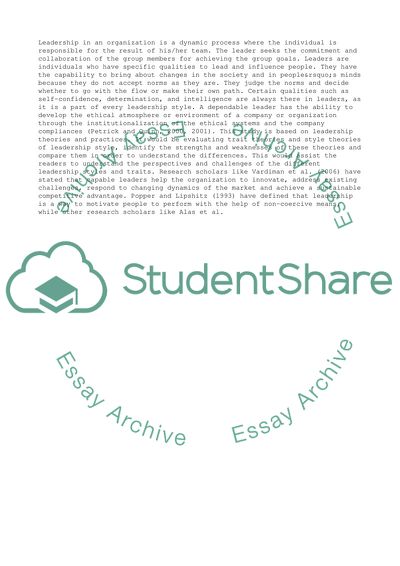Cite this document
(Leadership Style during Transition in Society Essay - 1, n.d.)
Leadership Style during Transition in Society Essay - 1. Retrieved from https://studentshare.org/business/1793497-main-assignment-question-compare-and-contrast-trait-theories-of-leadership-with-style-theories-what-are-the-strengths-and-weaknesses-of-both-theories-and-how-might-you-apply-these-theories-in-an-organisational-context
Leadership Style during Transition in Society Essay - 1. Retrieved from https://studentshare.org/business/1793497-main-assignment-question-compare-and-contrast-trait-theories-of-leadership-with-style-theories-what-are-the-strengths-and-weaknesses-of-both-theories-and-how-might-you-apply-these-theories-in-an-organisational-context
(Leadership Style During Transition in Society Essay - 1)
Leadership Style During Transition in Society Essay - 1. https://studentshare.org/business/1793497-main-assignment-question-compare-and-contrast-trait-theories-of-leadership-with-style-theories-what-are-the-strengths-and-weaknesses-of-both-theories-and-how-might-you-apply-these-theories-in-an-organisational-context.
Leadership Style During Transition in Society Essay - 1. https://studentshare.org/business/1793497-main-assignment-question-compare-and-contrast-trait-theories-of-leadership-with-style-theories-what-are-the-strengths-and-weaknesses-of-both-theories-and-how-might-you-apply-these-theories-in-an-organisational-context.
“Leadership Style During Transition in Society Essay - 1”, n.d. https://studentshare.org/business/1793497-main-assignment-question-compare-and-contrast-trait-theories-of-leadership-with-style-theories-what-are-the-strengths-and-weaknesses-of-both-theories-and-how-might-you-apply-these-theories-in-an-organisational-context.


